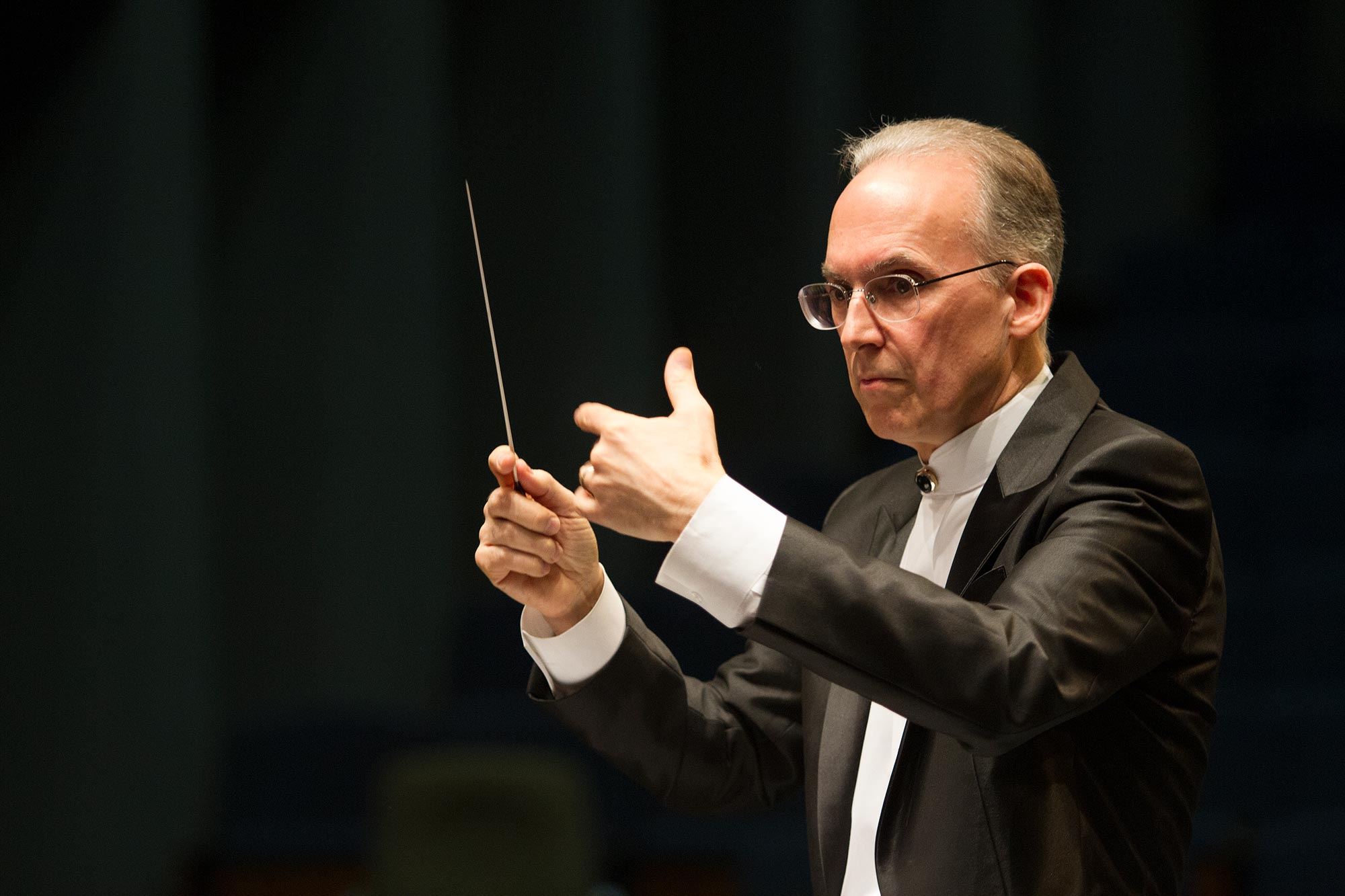Elevating the low clarinet
by Catalina Myers |

In Mark Wolbers’ corner of YouTube, the melodic drama of the low clarinet can be heard in his 90-second to nearly three-minute 48 études videos, a project he spent nearly six years adapting for clarinet from Franz Wilhelm Ferling’s oboe études. The emeritus professor retired from UAA after a 28-year career as division coordinator of Wind and Percussion Studies. He was also the conductor for the university’s wind ensemble and musical director for the UAA Clarinet and Saxophone Ensembles. Currently, Wolbers is conducting the Anchorage Community Concert Band.
Although not as widely known, but recently gaining popularity among musicians and composers, low wind instruments such as bass clarinets, bassoons and basset horns are making a comeback — and although considered modern, their comeback dates back to the 18th century when musical icon Wolfgang Amadeus Mozart was the musician du jour among Europe’s elite. It is even believed that Mozart’s Clarinet Concerto was specifically written for the basset horn and clarinetists in the 21st century wanting to return to the pure intention of Mozart’s music to perform their own instruments, but they have run into a bit of a roadblock. The problem, according to Wolbers; there is little to no modern music allowing students or musicians to practice or perform in the extended lower ranges. He decided to fix that.
“The whole reason for the études — the basset horn and the modern bass clarinet, what is called a basset clarinet — is for them to all have this extended lower range,” said Wolbers. Even though musicians have the options on their instruments to add extra keys, they’re just not going to find a lot of music catering to these lower notes. “On a regular clarinet, the instrument can go down to low E and what is often done, is that musicians put on thumb keys and extra keys on the pinkies so it can go down to low C. There is very little repertoire that you can make use with or train with those keys.”
According to Wolbers, modern composers will write all the way down to the lower keys for clarinets, but there are few pedagogical materials allowing musicians to extend their technique and range to the lower keys.
“The goal of these studies was two things: to meet a pedagogical goal for these instruments for students or musicians to practice these lower keys, but to also give them performance material and allow them to demonstrate the whole range of the instrument,” Wolbers said.
All 48 of Wolbers’ études have an expanded range of three octaves or more for wind instruments to play across. He said basset horns always could reach low C and in their heyday, many of Mozart’s close musical friends played the basset clarinet for which it is believed that he wrote and composed for.
“A lot of players today are interested in trying to recreate what they think is the original performance range of the Mozart Clarinet Concerto,” said Wolbers. “The modern low clarinets, ones that have been built in the last 40-50 years, have basically all been built to go down to low C. Part of the thinking in building them like that was so the low clarinet could have the same range as the bassoon. So if you needed to substitute a bassoon part, you could use a low clarinet that could go all the way down to that range.”
Wolbers said part of the resurrection of the low clarinet and composers writing the lower ranges is that it’s “just a cool sound.” He said you can hear a lot of the low clarinet in older movie and television scores, like the original Star Trek, which takes advantage of the dramatic, rich sound the low clarinet offers.
For Wolbers, the clarinet has been a main focus of his more than 30-year-long career in music, which started early in childhood. Born to Great Depression-era parents with a father who fought in World War II, music was a mainstay in the Wolbers’ household, and each of his five brothers learned to play the family’s three instruments, one of which happened to be a clarinet. Although Wolbers said he hadn’t intended to become a clarinetist, it was an instrument that chose him — the one he excelled at most and ultimately became his musical focus and passion.
“I’ve played my share of instruments,” said Wolbers. Throughout his undergraduate and graduate musical education, Wolbers’ instrument range extended to the trumpet and eventually all of the woodwind instruments in preparation for college-level instruction. “The clarinet just kind of speaks to me and ironically out of all the voices of the clarinet, the alto voice of the basset horn really seems to resonate with me.”

Wolbers said the genesis for the 48 études project was born out of his desire to recruit musicians for an esteemed university-level ensemble. In Alaska, recruiting often meant jumping on a plane, and to keep cost levels down, Wolbers would forgo a pianist and hold solo community performances in the small towns and villages off the road systems during his trips. He said these trips often were testing grounds for various wind instruments and when he started to focus on basset horns he needed material to perform and just wasn’t finding any.
“I started arranging some of these études that I knew from when I studied oboe for basset horn and began expanding the range so I could really show off what the instrument could do,” said Wolbers. “People really responded to those études and by the time I had finished, over the course of a few summers, I had about 12 of these arranged and I thought, ‘I should just finish these.’”
Wolbers went in blind, having no idea if there would be a market for them, but decided to persist with the project and figured the rest would fall into place when the time came for publishing. Once he’d completed all 48 études, he sent them out to friends worldwide who were experts in low clarinet and lower range wind instruments, all of whom encouraged Wolbers to move ahead with publishing.
In October 2020, famous musical publishing house Gérard Billaudot Éditeur, based in Paris, France, published Wolbers’ Ferling 48 études adapted for the clarinet. For the past year, Wolbers has been recording his études in his home and uploading the recordings to his YouTube channel so clarinetists and bass woodwind enthusiasts can listen to the études and perhaps be inspired to pick up their instruments and rise to the challenge of the extended range the études offer.
“They are hard and listed as challenging,” said Wolbers. “But I am pretty thrilled about the whole collection. I think the recordings are solid. I think the music is really beautiful and I’m hoping that people will love it.”
 "Elevating the low clarinet" is licensed under a Creative Commons Attribution-NonCommercial 4.0 International License.
"Elevating the low clarinet" is licensed under a Creative Commons Attribution-NonCommercial 4.0 International License.













